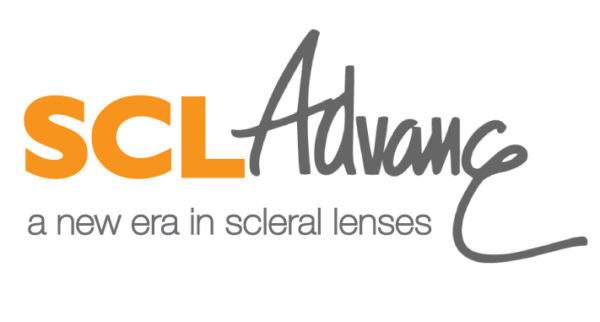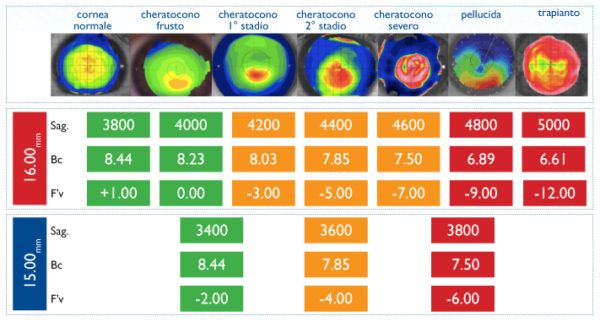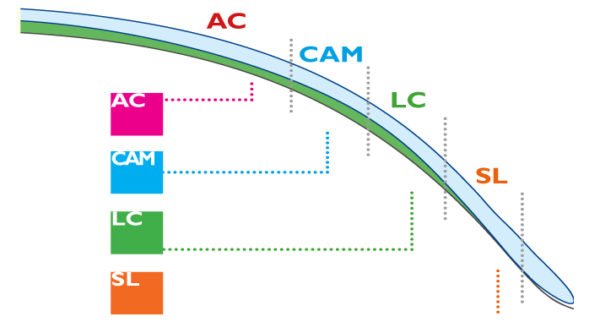SCL ADVANCE rgp
The RGP Advance are characterized by a multi-tangential profile, designed to comply with the shape of the ocular surface and allow a correct application stability. Indicated in the adaptation on irregular corneas (KC, PMD, PK, …), as they promote visual recovery, minimize high-order aberrations (HOA), SCL Advance lenses ensure the wearer an excellent level of comfort.
The fitting protocol of the Advance sclerals is easy to learn and supports the practitioner, even less experienced, in the selection of the ideal lens in relation to the specifications of the corneal problem.
fitting philosophy
The philosophy of the SCL Advance protocol allows to apply the most suitable lens to every ocular condition and to the respective morphological particularities. The range of parameters is collectible in relation to the characteristics of the front segment and you can orient yourself in the choice of different diameters (as arranged in the test set), respecting the size of the visible iris and allowing the only useful coverage of the corneo-scleral surface.
trial lens selection
The sagittal depth value (SAG) is studied for the different fitting conditions. In case of minimal optical irregularities (initial keratocons, epithelial dystrophy,…) the use of shallower lenses allows an excellent alignment to the corneo-limbare area, while in more complex situations (evolved cones, keratoplastics,…) it is necessary to use deeper models; the selection criteria for the first contact lens to be tried are indicated in the normogram.
design and areas
The Advance design is divided into four areas, each marked by an acronym, as described in the diagram, which relate to the respective anatomical ocular areas. The possibility of intervening on the fitting, modifying in individual way the alignment of every single zone, allows through a single drawing to manage different problems.
The fluoroscopic evaluation of the lacrimal reservoir (illumination in optical section), facilitate the practitioner in reading the fit; the variations of the individual parameters are expressed in units (+/-1), corresponding to steps of ±25µm.



